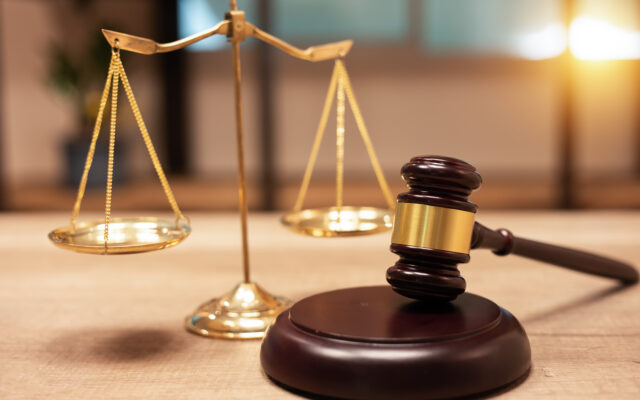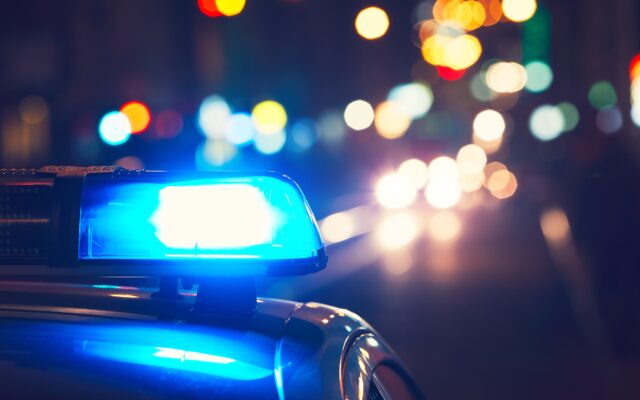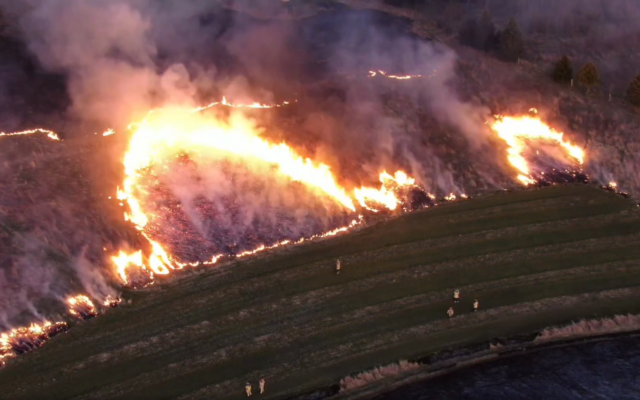Fourth Capitol riot defendant charged with having firearms

A fourth Capitol riot defendant was charged Thursday with firearms violations in connection with the January 6 attack. The new charges add weight to claims that rioters used weapons during the mob violence and come after dozens of riot defendants have already been charged with wielding other “deadly or dangerous” weapons.
The defendant, Guy Reffitt, of Wylie, Texas, was charged with two new crimes in a superseding indictment Thursday, which alleged that he transported a rifle and a semi-automatic handgun to D.C. and that he carried the semi-automatic handgun while on U.S. Capitol grounds January 6.
Reffitt had already been facing three other charges for alleged obstruction of an official proceeding, entering and remaining in a restricted area and obstruction of justice. In the original affidavit filed when he was arrested in January, prosecutors said Reffitt had told his family that he’d brought his gun to D.C. and had “stormed the Capitol,” but they hadn’t previously charged him with a firearms violation.
Reffitt’s wife told prosecutors he is a member of a “Three Percenters” militia — a group that likens present-day U.S. government to the oppression of British authorities during the Revolutionary war — and in an April court filing, the government said that Reffitt had spoken over Zoom with two other Three Percenter militia members on January 10, and told them he had been carrying a .40 firearm on his side January 6.
After the attack, prosecutors also alleged Reffitt threatened his family when his son participated in an interview with the FBI. According to Reffitt’s son, Reffitt told his kids that if they turned him in, they would be traitors, “and you know what happens to traitors… traitors get shot,” he allegedly said.
He is the fourth Capitol riot defendant to be charged with a firearms violation, but he is the first to be charged under a statute that alleges he transported the firearms “intending” that they be used “unlawfully and in furtherance of a civil disorder.” Of the three other riot defendants charged with firearms violations, court documents suggest that at least two of them were armed with guns during the mob attack on January 6.
One defendant, Christopher Alberts, faces charges for possession of a firearm on Capitol grounds or buildings. Police said in a criminal charging document that during the evening of January 6, as authorities were clearing the U.S. Capitol Visitor Center, Alberts was arrested with a loaded handgun and a spare magazine, along with a gas mask, pocket knife, a packaged military meal and a first aid kit. Authorities said there was one round in the handgun’s chamber. Alberts has pleaded not guilty.
Another, Lonnie Coffman, was found with a “large and unlawful” trove of weapons in his truck, which he had parked downtown. When Coffman returned to his vehicle the evening of January 6, authorities said he had also been carrying two additional loaded firearms, and a judge wrote in a court ruling that there was evidence he was armed while participating in riots near the Capitol.
Coffman has not been charged with carrying firearms during the riot, and he pleaded not guilty to the charges he faces for unlawful possession of firearms, high-capacity magazines and ammunition.
Another defendant, Cleveland Meredith, did not attend the rally at the Capitol January 6, but was arrested in D.C. the day after the attack with an assault-style rifle equipped with a telescopic sight, a Glock firearm with several high capacity magazines and over 2,500 rounds of ammunition — including at least 320 “armor-piercing” rounds.
He said he’d arrived too late to attend the rally, but the following day, authorities said he sent a text threatening to shoot House Speaker Nancy Pelosi in the head.
While driving to Washington, D.C., on January 6, Meredith sent a text that said, “Hauling ass, 3.5 hours from target practice.”
It is not clear how many may have carried firearms during the siege because the majority of riot defendants were not arrested the day of the attack, but rather, were tracked down at their homes or businesses weeks or months later. Reffitt’s case stands alone, in that he was charged for firearm violations months after the attack. The other three defendants were arrested while they were still in D.C., and, according to the criminal complaints against them, all were found with firearms in their possession at the time.
In addition to those charged federally, at least five people were arrested in downtown D.C. on January 5 and 6 in what Metropolitan Police designated as “unrest-related” arrests. They were all charged locally with carrying pistols and large capacity ammunition feeding devices, though the Metropolitan Police Department would not connect them directly to the events at the Capitol because they were arrested before the riot began.
In addition to those charged with carrying firearms, a CBS News review of court documents last month revealed that dozens of defendants had been accused of wielding other “deadly or dangerous” weapons that weren’t firearms, including Tasers, tomahawk axes, crowbars, flagpoles, a knife, an ice axe, a firecracker, a stun gun, baseball bats, fire extinguishers, a wooden club and chemical spray.
Clare Hymes contributed to this report.



